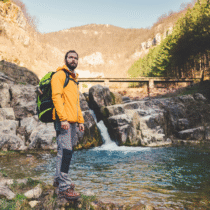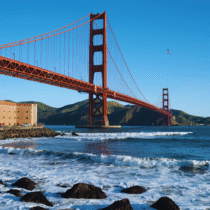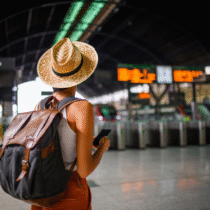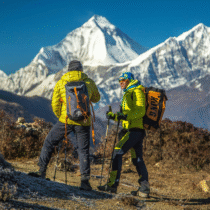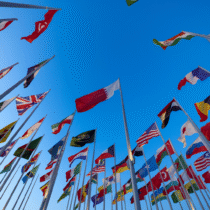Venturing out on multi-day hikes in the United States offers an unparalleled way to experience the country’s diverse landscapes. From the rugged peaks of the Rockies to the serene trails of the Appalachian Mountains, these hikes allow enthusiasts to connect deeply with nature over several days. Proper preparation and knowledge can make all the difference in ensuring a rewarding outdoor adventure.
A well-planned multi-day hike involves understanding trail conditions, gear requirements, and safety measures. Whether it’s the scenic beauty of national parks or hidden gems off the beaten path, hikers can find trails that match their skill level and interests. With the right information, anyone can embark on a memorable journey.
This guide highlights essential tips, popular trails, and practical advice to help hikers make the most of their multi-day excursions. By exploring these trails, outdoor adventurers can find their perfect escape into the wilderness and create lasting memories.
Planning Your Multi-Day Hike
Successfully planning a multi-day hike requires careful consideration of several essential factors. These include selecting the appropriate trail, ensuring all necessary permits are obtained, and adequately preparing physically for the trip. Each element contributes to a safe and enjoyable backpacking experience.
Choosing the Right Trail
When selecting a trail for a multi-day hike, factors such as distance, terrain, and environmental conditions play a crucial role. Consider trails within national parks or forests that offer established campsites and water sources. Reviews and recommendations from experienced hikers can provide valuable insights.
Assess the trail’s difficulty level based on individual fitness and experience. Beginners may prefer shorter, flatter hikes, while seasoned backpackers might seek out challenging routes with varying elevations. Online resources, such as the AllTrails app, can help identify suitable options, including trailhead locations and conditions.
Obtaining Permits and Access
Before embarking on a backpacking trip, hikers should research and obtain the requisite permits. Many popular trails, especially in national parks, require a backcountry permit for overnight stays. These permits help manage foot traffic and minimize environmental impact.
Visit the official websites of the parks or forests for specific guidelines on obtaining permits, as some may be available online or require in-person visits. Be mindful of reservation deadlines and seasonal restrictions, as permits can fill quickly during peak times.
Physical Preparation and Fitness
Physical fitness is vital for a successful multi-day hike. Regular conditioning should focus on building endurance, strength, and flexibility. Incorporate long hikes, strength training, and exercises targeting the core and legs into a training regimen.
Aim for at least 3 to 4 weeks of preparation, gradually increasing hiking distance and load. Carry a weighted backpack during practice hikes to simulate actual conditions. Staying hydrated and maintaining a nutritious diet will also aid in physical readiness for challenging terrains.
Top Multi-Day Hikes in the United States
Multi-day hikes offer an opportunity to explore diverse landscapes and experience the beauty of the outdoors. The following hikes stand out for their scenic views and unique challenges.
Pacific Crest Trail
The Pacific Crest Trail (PCT) stretches over 2,650 miles from Mexico to Canada. It traverses the Sierra Nevada and Cascade mountain ranges, showcasing diverse ecosystems. Hikers can experience desert terrain, lush forests, and alpine meadows.
The trail is divided into segments, allowing for various multi-day trips. Popular sections include the Sierra Nevada stretch and the Northern Cascades. Preparations should include obtaining permits, as segments may be regulated.
Expect to encounter elevation gains and challenging weather conditions, particularly in the Sierras. The PCT is ideal for seasoned hikers seeking a long-term trekking experience.
Appalachian Trail
Spanning approximately 2,190 miles, the Appalachian Trail (AT) runs from Georgia to Maine. It is renowned for its rich history and accessibility, drawing thousands of hikers each year. The AT features a mix of terrains, including dense forests, rocky ridges, and serene valleys.
Hikers can choose from popular sections like the Smoky Mountains and the White Mountains for multi-day hikes. Key considerations include water sources and shelter availability along the trail. The AT also has designated campsites, making it easier for hikers to plan overnight stays. Its well-marked paths provide a reliable navigation experience, essential for both novice and experienced trekkers.
John Muir Trail
The John Muir Trail (JMT) is a 211-mile trail in California, traversing the Sierra Nevada. It begins in Yosemite Valley and culminates in the peaks of Mount Whitney, the tallest mountain in the contiguous United States.
The hike is famous for its stunning vistas, including granite cliffs and glacial lakes. Hikers generally complete the trail in about two to three weeks. Notable features include the picturesque Tuolumne Meadows and breathtaking views from passes like Donohue Pass.
Permits are required for the JMT, often involving a lottery system due to its popularity. Seasonal considerations are crucial, as snow can linger well into summer.
Wonderland Trail
The Wonderland Trail circles Mount Rainier in Washington, covering about 93 miles. This loop hike provides hikers with a close view of glaciers, waterfalls, and blooming wildflower meadows. The trail is typically completed in about 10 to 14 days, with diverse ecosystems along the route. Hikers should prepare for variable weather and challenging elevation changes.
Camping is available at designated sites, which can fill quickly during peak season. Securing a backcountry permit is necessary and recommended to ensure a smooth hiking experience. The Wonderland Trail offers an immersive experience in one of the Pacific Northwest’s stunning national parks.
Exploring National Parks and Iconic Regions
The United States hosts a variety of iconic regions and national parks, each offering unique multi-day hiking experiences. These areas are rich in natural beauty and diverse ecosystems, making them perfect for adventurers seeking to immerse themselves in nature.
Sierra Nevada and Yosemite National Park
Yosemite National Park is a crown jewel of the Sierra Nevada Mountains. Known for its towering granite cliffs, waterfalls, and giant sequoias, it provides numerous multi-day hiking options.
The John Muir Trail is a popular choice, stretching approximately 211 miles. It showcases breathtaking landscapes, including stunning views of Half Dome and Mount Whitney. Clouds Rest Trail offers a shorter alternative with equally awe-inspiring scenery.
Backpackers should be prepared for varying weather conditions and terrain. Permitting for overnight stays is essential, particularly during peak season. Each trail provides campsites amidst nature, enhancing the overall experience.
Grand Canyon and Surrounding Trails
Northern Rockies and Glacier National Park
Grand Canyon National Park presents one of the most iconic hiking destinations in the U.S. The Bright Angel Trail leads into the canyon’s depths, offering water stations and rest areas.
South Kaibab Trail is another choice, famed for its panoramic views. Both trails require adequate preparation due to the canyon’s drastic temperature fluctuations and elevation changes. It is vital to stay hydrated and aware of the schedule for returning.
For a unique experience, Phantom Ranch at the canyon floor offers lodging options. Hikers can enjoy the beautiful surroundings while resting before the trek back.
Glacier National Park stands out in the Northern Rockies for its rugged terrain and glacial landscapes. The Highline Trail is well-known for breathtaking vistas, running along the Continental Divide.
This park’s multi-day hikes vary in difficulty, catering to both novice and experienced hikers. The scenery includes diverse wildlife and wildflower-filled meadows. Grinnell Glacier provides a more strenuous trek, rewarding hikers with spectacular glacier views.
Permits are necessary for overnight backcountry camping, and visitors should familiarize themselves with local wildlife precautions. Seasoned hikers appreciate the solitude and beauty these trails offer.
Unique Hikes in Other Regions
Beyond the most popular parks, other regions boast incredible hiking opportunities. Mount Rainier National Park features trails like the Wonderland Trail, which encircles the massive volcano and showcases diverse ecosystems.
Zion National Park offers unique routes such as Angels Landing, known for dramatic views and steep drop-offs. Hikers must assess their skills and courage before embarking on these trails.
Shenandoah National Park in the Appalachian Mountains provides a range of multi-day hikes, many featuring stunning views of the Blue Ridge Mountains. Hikers can explore cascading waterfalls and lush forests.
For those looking for solitude, the Eagle Cap Wilderness in Oregon presents remote trails through pristine backcountry, offering adventures away from the crowds. Exploring these various national parks and regions enhances the multi-day hiking experience across the United States.
Essential Tips for a Safe and Rewarding Journey
Embarking on multi-day hikes requires careful planning and attention to various factors. Understanding terrain, selecting appropriate gear, and being aware of wildlife can enhance both safety and enjoyment.
Navigating Terrain and Elevation Changes
Navigating varying terrain can present challenges, especially with significant elevation gain. Hikers should familiarize themselves with the trail profile, noting sections with steep ascents or descents. Utilizing topographic maps or navigation apps helps track elevation changes, which may lead to breathtaking panoramic views.
Hiking poles can provide essential support during steep sections, reducing strain on the knees. When approaching major elevation changes, it’s advisable to maintain a steady pace and take regular breaks to acclimate to alterations in altitude, especially at locations like Half Dome.
Watching for wildflowers along the trails can also be rewarding, marking changes in the ecosystem that accompany elevation shifts.
Gear and Packing Essentials
The right gear can make or break a multi-day hiking experience. A well-fitted backpack with ample capacity ensures comfort while carrying essentials. Hikers should prioritize lightweight items, such as a tent, sleeping bag, and cooking equipment, to ease the burden.
Packing adequate food and water purification methods is critical for sustenance. Layering clothing is vital for temperature regulation. Waterproof and breathable gear protects against unpredictable weather conditions.
Bringing a first aid kit is essential. Including items for specific needs, such as blister treatment and insect repellent, can prevent minor issues from escalating.
Wildlife Awareness and Camp Safety
When hiking in regions inhabited by megafauna, awareness is key. Familiarize oneself with local wildlife, such as bears or mountain lions, and understand safe practices for encounters. Storing food securely in bear-proof containers and keeping a clean campsite reduces attraction to wildlife.
Camp safety also involves selecting suitable camping spots away from potential hazards, such as dead trees or cliffs. Hikers should maintain a respectful distance from all wildlife while observing their natural behaviors.
By prioritizing safety and awareness, hikers can enjoy the full scope of their outdoor adventure without unnecessary risks.



